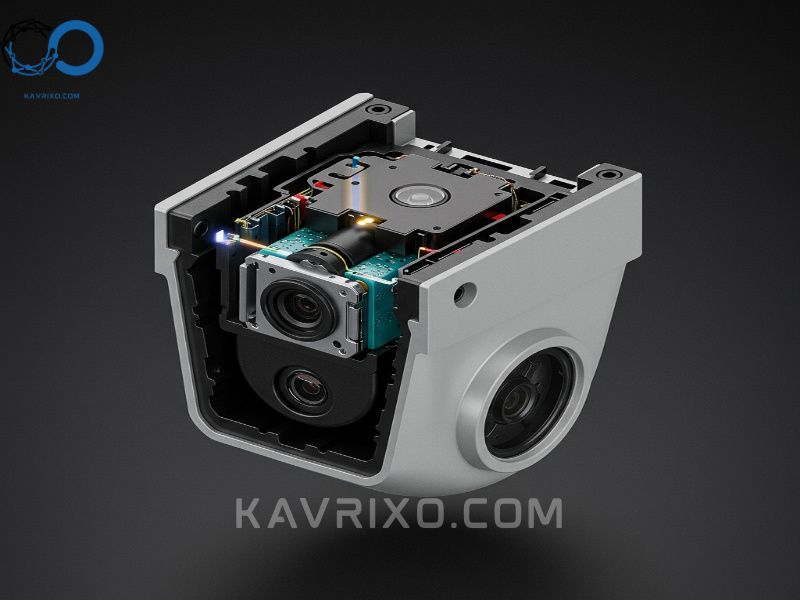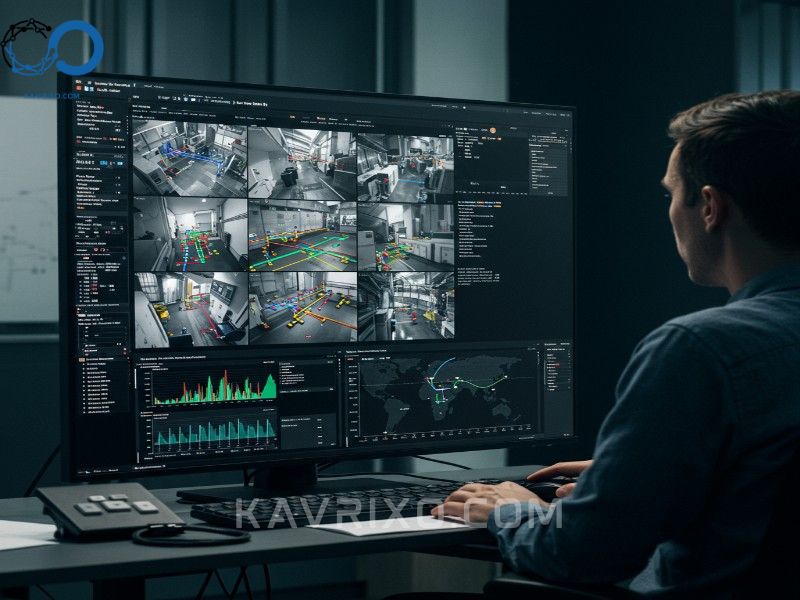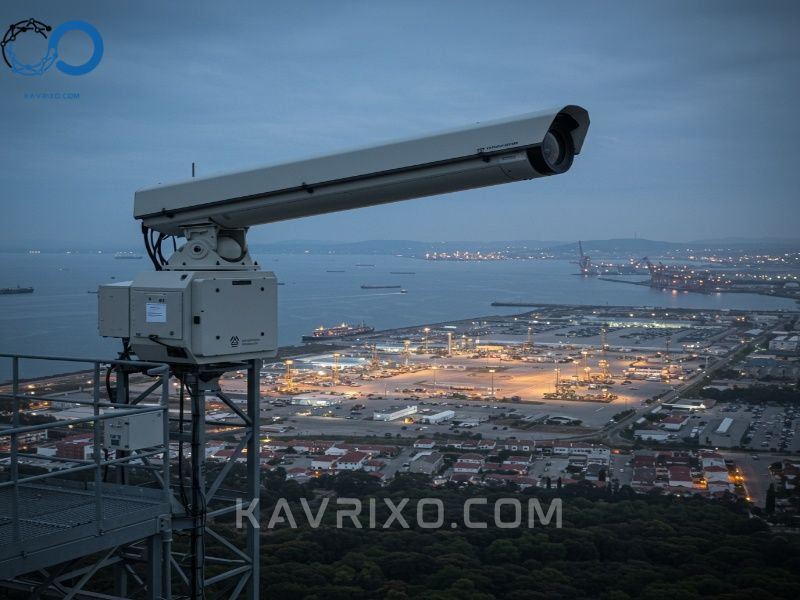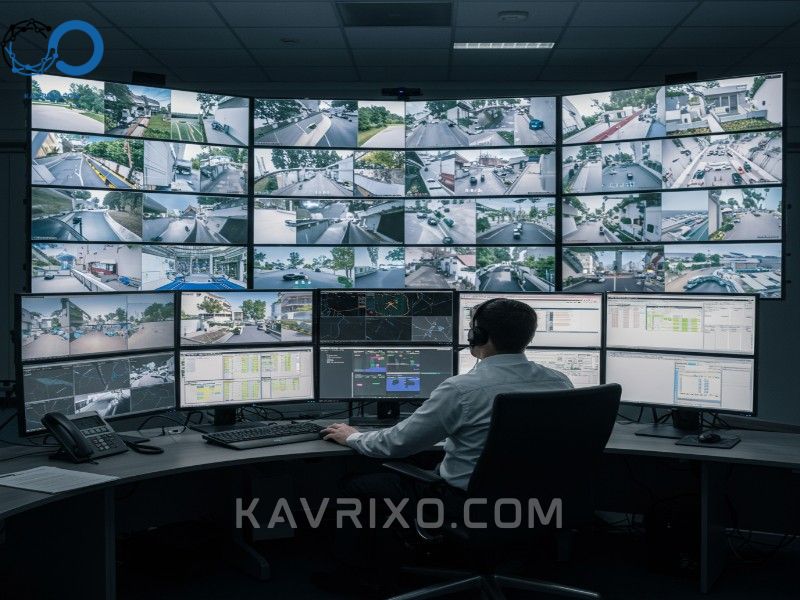In the realm of security and surveillance, the market is vast, ranging from affordable consumer-grade devices to highly specialized, multi-million dollar enterprise installations. For those seeking absolute, uncompromised safety—whether protecting national assets, critical infrastructure, or generational wealth—standard solutions simply won’t suffice. This pursuit of flawless protection leads us directly to the realm of the most expensive security camera systems available today.
These aren’t merely cameras; they are complex, integrated surveillance ecosystems built on cutting-edge technology, demanding specialized engineering, and offering capabilities that border on science fiction. Understanding the true cost of these systems requires looking far beyond the lens and delving into the sophisticated features, robust construction, and proprietary software that justify their astonishing price tags.
Contents
- 1 Defining “Expensive”: Why Do Some Security Cameras Cost More Than a Car?
- 2 The Features That Justify the Premium Price Tag
- 3 Specific Categories of the Most Expensive Security Camera Solutions
- 4 Case Studies: Where Are These Elite Systems Deployed?
- 5 The Total Cost of Ownership (TCO): More Than Just the Hardware
- 6 Investing in Unparalleled Safety: Is the Most Expensive Security Camera Worth It?
- 7 Conclusion: Securing the Future with Premium Surveillance
Defining “Expensive”: Why Do Some Security Cameras Cost More Than a Car?
When discussing the most expensive security camera, we aren’t talking about a $2,000 professional dome camera. We are often referring to specialized, industrial, or defense-grade units that can range from $15,000 for a single specialized unit to installations costing hundreds of thousands, or even millions, of dollars. The price is a direct reflection of the extreme performance demands placed upon the equipment and the incredibly narrow niche markets they serve.
The cost factors boil down to three primary areas: proprietary research and development (R&D), highly specialized components, and the integration complexity necessary for elite security setups.

Beyond Megapixels: The Role of Advanced Sensor Technology
While consumer cameras often boast high megapixels, the true cost driver in high-end surveillance is the sensor’s quality and ability to perform under duress. The most expensive security camera relies on sensors that utilize advanced low-light technology, often incorporating large formats and proprietary algorithms to pull usable, forensic-quality footage from near-total darkness.
Furthermore, many premium systems integrate specialized imaging technologies. Thermal imaging, for instance, is crucial for detecting human and vehicular presence regardless of camouflage, smoke, or complete darkness. Hyperspectral imaging goes even further, analyzing light across hundreds of spectral bands to identify specific materials or chemical traces—a capability vital for industrial monitoring or border security. This level of customized sensor technology requires immense R&D investment, pushing the final unit cost exponentially higher than standard visible-light cameras.
Robust Build Quality and Environmental Resilience
A standard security camera is built for indoor or mild outdoor use. A truly expensive system must often survive the most challenging environments imaginable—be it the freezing temperatures of the Arctic, the corrosive salt spray of coastal regions, or the intense heat of industrial facilities.
The housing used in these premium monitoring solutions is often constructed from aerospace-grade materials, such as hardened stainless steel or specialized aluminum alloys, providing protection against extreme vandalism, ballistic threats, or intense seismic vibration. These housings are not simply weatherproof; they are designed to maintain operational integrity in conditions that would destroy conventional electronics. This robust engineering, coupled with specialized heating and cooling elements and self-cleaning optics, significantly contributes to the final price tag, ensuring the most expensive security camera operates flawlessly 24/7, year after year.

Integration and Customization: Enterprise-Level Solutions
The hardware cost is only one piece of the puzzle. The most significant expense in high-end surveillance often lies in the software infrastructure. These elite security setups require seamless integration into complex Video Management Systems (VMS) and often need custom API access to communicate with other security layers, such as access control, fire detection, and command center platforms.
Companies investing in the most expensive security camera systems demand bespoke solutions tailored precisely to their operational protocols and existing infrastructure. This customization involves dedicated engineering teams, proprietary software licenses, and specialized training, ensuring the system doesn’t just record video, but acts as a critical, integrated component of a broader security apparatus. This enterprise-level integration capability is non-negotiable for critical infrastructure and high-security government installations.
The Features That Justify the Premium Price Tag
What exactly are you paying for when you invest in luxury ip security cameras or high-end surveillance systems? The answer lies in features that transcend simple recording—they provide actionable intelligence, forensic detail, and predictive capabilities.
Ultra-High Resolution and Forensic Detail
While 4K resolution is common today, the upper echelon of security cameras pushes well beyond this. Many specialized systems offer 8K resolution and above, not for cinematic quality, but for forensic detail across massive viewing areas.
Imagine a single camera capable of monitoring an entire sports stadium or a sprawling logistics center. The resolution must be high enough that an operator can digitally zoom in on a subject 500 meters away and still clearly identify license plates or facial features. This requires extremely large, high-quality image sensors paired with precision optics—often motorized lenses that can achieve perfect focus across vast distances (P-Iris or motorized zoom/focus). When incident review is necessary, this forensic detail ensures that no crucial piece of evidence is missed, a capability that dramatically increases the monetary value of the system.
AI and Deep Learning Analytics
The true intelligence of the most expensive security camera resides in its analytical capabilities. High-end systems utilize complex, deep-learning algorithms that go far beyond simple motion detection. These AI packages are designed to understand context and predict risk.
- Behavioral Analysis: The system can detect abnormal behavior, such as loitering, running in a restricted area, or suspicious object placement (e.g., unattended bags), triggering alerts before an incident escalates.
- Facial and Object Recognition: Precise identification systems, critical for high-security areas, can verify known personnel, flag individuals on a watchlist, or track specific vehicles across a large campus.
- Heat Mapping and Crowd Control: In commercial or public safety settings, these analytics provide real-time data on foot traffic flow, identifying bottlenecks or excessive crowd density, allowing security personnel to proactively manage public safety risks.
This level of analytical processing requires powerful onboard processing chips (often specialized GPUs) within the camera itself, enabling edge computing that reduces network latency and ensures immediate alerts. This sophisticated AI is a significant driver of the cost for luxury ip security cameras.

Military-Grade Encryption and Data Security
In a world increasingly concerned about cyber threats, the data captured by high-end surveillance systems is a valuable target. If the data is compromised, the entire security investment is nullified. Therefore, the most expensive security camera incorporates military-grade cybersecurity protocols.
This includes end-to-end encryption (often AES-256 or higher) for video transmission both at rest and in transit, secure boot mechanisms to prevent unauthorized firmware modification, and strict compliance with global data privacy standards (like GDPR or CCPA). For critical infrastructure, the cameras themselves must often meet rigorous national security standards (like NDAA compliance in the US), ensuring they are free of foreign components that could pose espionage risks. The integration of these robust, certified security features adds layers of complexity and cost that standard cameras never encounter.
Specific Categories of the Most Expensive Security Camera Solutions
The term “most expensive” often refers less to a single product and more to an entire category of highly specialized equipment designed for unique operational challenges.
High-End PTZ Cameras for Wide Area Monitoring
Pan-Tilt-Zoom (PTZ) cameras are common, but the high-end versions are engineering marvels. These premium monitoring solutions boast unparalleled optical zoom (often 40x or more), allowing them to maintain forensic detail across several miles.
What makes them truly expensive is their speed and precision. They use powerful, industrial-grade motors to track targets moving at high speeds with incredible accuracy. Furthermore, these PTZ systems often include integrated radar or laser detection systems. The radar detects movement across a vast area (e.g., 5-10 km radius), and automatically directs the high-powered PTZ camera to zoom in on the specific coordinate, providing autonomous, long-range threat assessment. This autonomous capability, crucial for border security or coastal monitoring, places these units firmly in the category of the most expensive security camera hardware.

Thermal and Hyperspectral Imaging Cameras
While mentioned earlier, these cameras warrant their own category due to their non-visual operational function. They are indispensable for environments where smoke, fog, or darkness render visible light cameras useless. They detect thermal signatures, making them perfect for monitoring industrial processes (identifying overheating machinery), environmental protection (detecting wildfires), or search and rescue operations.
Hyperspectral cameras, even more specialized, are used in high-level defense or industrial quality control. They can identify the exact chemical composition of a substance, providing critical early warnings in chemical plants or ensuring the purity of high-value manufacturing processes. Because these units utilize highly specialized sensors and optical components not mass-produced, their cost is inherently astronomical, cementing their status among the most expensive security camera solutions.
Luxury IP Security Cameras for Residential Estates
While many of the most expensive cameras are industrial, there is a dedicated market for luxury ip security cameras designed for high-net-worth individuals (HNWIs) and elite residential compounds. Here, cost is driven not only by performance but also by aesthetic integration.
These systems must offer uncompromising security features (like military-grade encryption and 8K resolution) while remaining virtually invisible. Manufacturers custom-design camera housings to match specific architectural materials—embedded seamlessly into stone, wood, or custom metalwork. They integrate flawlessly with smart home automation platforms (Crestron, Savant), ensuring security operations are discreet, silent, and aesthetically pleasing. For the ultra-rich, the requirement is security that is both flawless and invisible, leading to bespoke installations that often cost seven figures.

Case Studies: Where Are These Elite Systems Deployed?
Understanding the deployment environments highlights why the investment in the most expensive security camera systems is necessary. These are scenarios where failure is simply not an option.
Critical Infrastructure Protection
Facilities like nuclear power plants, national data centers, major transportation hubs (airports, high-speed rail lines), and water treatment facilities are prime targets for sabotage and terrorism. A failure here could result in catastrophic public safety issues or economic collapse.
These sites utilize multi-layered, high-end surveillance systems incorporating long-range PTZ cameras, thermal perimeter monitoring, and advanced AI analytics to track every movement. The initial cost of the hardware is high, but the real expense is in the engineering required to harden the entire system against electromagnetic interference (EMI), ensure redundancy, and guarantee zero downtime, even during power failures or attempted breaches.
High-Net-Worth Individual (HNWI) Residential Security
For individuals whose personal risk profile is extremely high—such as corporate CEOs, politicians, or celebrities—security must be absolute. These residential systems often employ the highest-grade luxury ip security cameras combined with biometric access control and secure vault rooms.
The deployment challenges here are unique: systems must operate flawlessly but silently, maintaining privacy for residents while providing comprehensive coverage. This often involves specialized fiber optic backbone networks, dedicated secure monitoring stations, and integration with personal protection teams, making the overall security expenditure substantial and placing the camera hardware at the peak of the market.
Large-Scale Commercial and Retail Environments
While standard retail uses less expensive cameras, the largest commercial logistics centers, massive distribution warehouses, and high-value manufacturing sites rely on premium solutions to manage operational efficiency and prevent massive inventory shrinkage.
In these environments, the system must not only detect theft but also analyze workflow, track packages automatically, and monitor occupational safety compliance across millions of square feet. The investment in the most expensive security camera here is justified by the immense potential savings derived from reducing loss, improving efficiency, and mitigating liability risks.
The Total Cost of Ownership (TCO): More Than Just the Hardware
The sticker price of the hardware is often just the beginning. The Total Cost of Ownership (TCO) for these elite security setups includes ongoing expenses that further underscore why they are the most expensive security camera options available.
Installation and Calibration Complexity
Installing a standard home security camera is a DIY job; installing a high-end surveillance system is a major construction and engineering project. These systems require specialized cabling (often armored fiber optic runs), dedicated power infrastructure, and highly precise calibration.
Expert technicians are required to calibrate the AI algorithms for the specific environment—teaching the system to recognize normal behavior versus threat patterns unique to the site. This lengthy, specialized labor, often involving security clearances and proprietary training, adds significantly to the initial capital expenditure.
Software Licensing and Ongoing Maintenance
Unlike consumer cameras which often offer free basic cloud storage, enterprise-level VMS and AI analytics software require robust, often perpetual, licensing fees. These licenses cover continuous updates, ensuring the system remains protected against new cyber threats and benefits from improved AI models.
Furthermore, maintenance contracts for the most expensive security camera systems are costly. They guarantee rapid replacement of specialized components, require regular preventative maintenance checks on motors, optics, and environmental controls, and ensure 24/7 technical support from highly skilled security engineers. This ongoing operational expenditure solidifies the system’s high-cost status.

Investing in Unparalleled Safety: Is the Most Expensive Security Camera Worth It?
For the vast majority of users, the answer is no. Standard professional-grade cameras provide excellent security. However, for a select few—those facing existential threats, managing national assets, or protecting multi-billion dollar operations—the investment in the most expensive security camera technology is not a luxury, but an essential risk management strategy.
Assessing Risk vs. Budget
The value proposition of high-end surveillance is simple: the cost of the system must be less than the potential financial, reputational, or human cost of a security failure. If a breach could lead to millions in losses, the disclosure of sensitive intellectual property, or threats to human life, then the comprehensive, flawless protection offered by the luxury ip security cameras becomes a justifiable expense. They provide redundancy, superior evidence capture, and proactive threat mitigation capabilities that simply cannot be replicated by cheaper alternatives.
Conclusion: Securing the Future with Premium Surveillance
The journey into the world of the most expensive security camera systems reveals a landscape defined by uncompromising technical excellence, military-grade resilience, and cutting-edge artificial intelligence. These high-end surveillance solutions are not defined by a single price point but by their capacity to solve the most complex and critical security challenges on the planet.
From the discreet, aesthetically flawless integration required for elite residential security to the massive, ultra-durable PTZ units protecting national borders, these systems represent the peak of modern monitoring technology. While the investment is substantial, the peace of mind—and the tangible, actionable intelligence they provide—makes them indispensable tools for securing assets, infrastructure, and lives in the most critical environments. They are the ultimate embodiment of proactive, sophisticated security, designed to protect what is truly irreplaceable.
